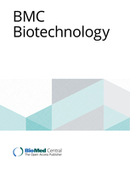Towards next generation maggot debridement therapy: transgenic Lucilia sericata larvae that produce and secrete a human growth factor
Diabetes and its concurrent complications impact a significant proportion of the population of the US and create a large financial burden on the American health care system. FDA-approved maggot debridement therapy (MDT), the application of sterile laboratory-reared Lucilia sericata (green bottle fly) larvae to wounds, is a cost-effective and successful treatment for diabetic foot ulcers and other medical conditions. Human platelet derived growth factor-BB (PDGF-BB) is a secreted dimeric peptide growth factor that binds the PDGF receptor. PDGF-BB stimulates cell proliferation and survival, promotes wound healing, and has been investigated as a possible topical treatment for non-healing wounds. Genetic engineering has allowed for expression and secretion of human growth factors and other proteins in transgenic insects. Here, we present a novel concept in MDT technology that combines the established benefits of MDT with the power of genetic engineering to promote healing. The focus of this study is to create and characterize strains of transgenic L. sericata that express and secrete PDGF-BB at detectable levels in adult hemolymph, whole larval lysate, and maggot excretions/ secretions (ES), with potential for clinical utility in wound healing. We have engineered and confirmed transgene insertion in several strains of L. sericata that express human PDGF-BB. Using a heat-inducible promoter to control the pdgf-b gene, pdgf-b mRNA was detected via semi-quantitative PCR upon heat shock. PDGF-BB protein was also detectable in larval lysates and adult hemolymph but not larval ES. An alternative, tetracycline-repressible pdgf-b system mediated expression of pdgf-b mRNA when maggots were raised on diet that lacked tetracycline. Further, PDGF-BB protein was readily detected in whole larval lysate as well as larval ES. Here we show robust, inducible expression and production of human PDGF-BB protein from two conditional expression systems in transgenic L. sericata larvae. The tetracycline-repressible system appears to be the most promising as PDGF-BB protein was detectable in larval ES following induction. Our system could potentially be used to deliver a variety of growth factors and anti-microbial peptides to the wound environment with the aim of enhancing wound healing, thereby improving patient outcome in a cost-effective manner.
Ed Rybicki’s insight:
Now THAT’S cool! Using a VERY old technique, modernised with maggots that make a HGF!
Towards next generation maggot debridement therapy: transgenic Lucilia sericata larvae that produce and secrete a human growth factor
Source: Virology News
